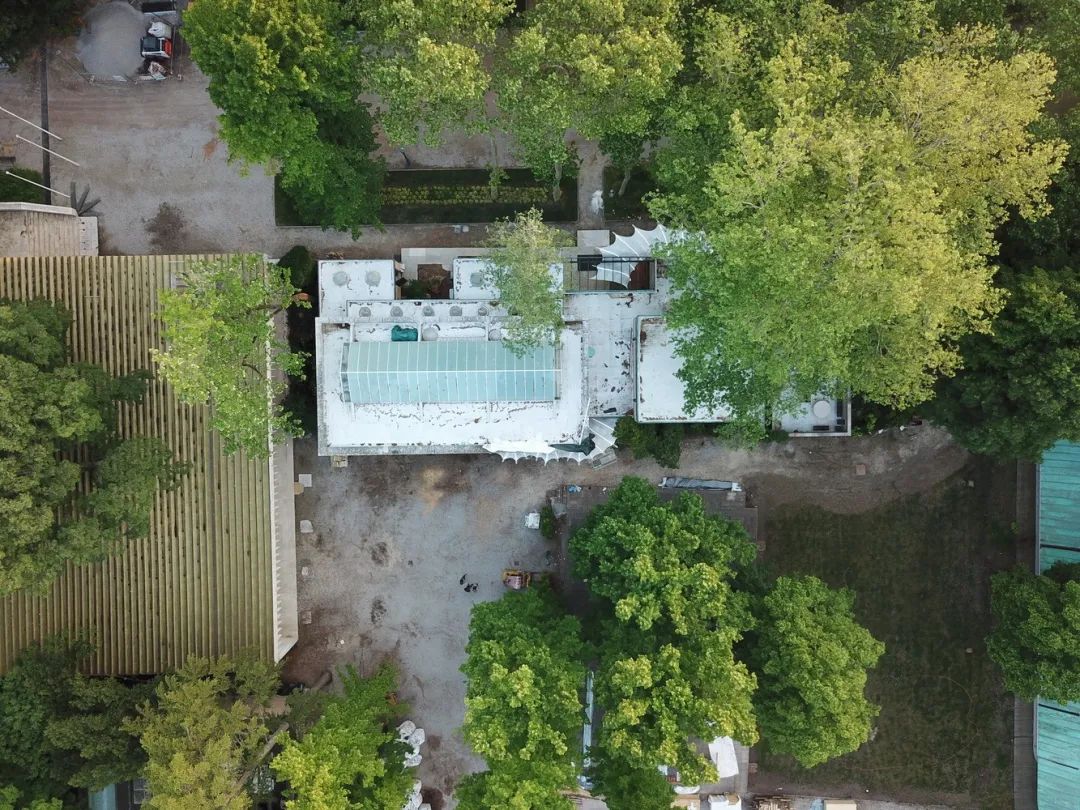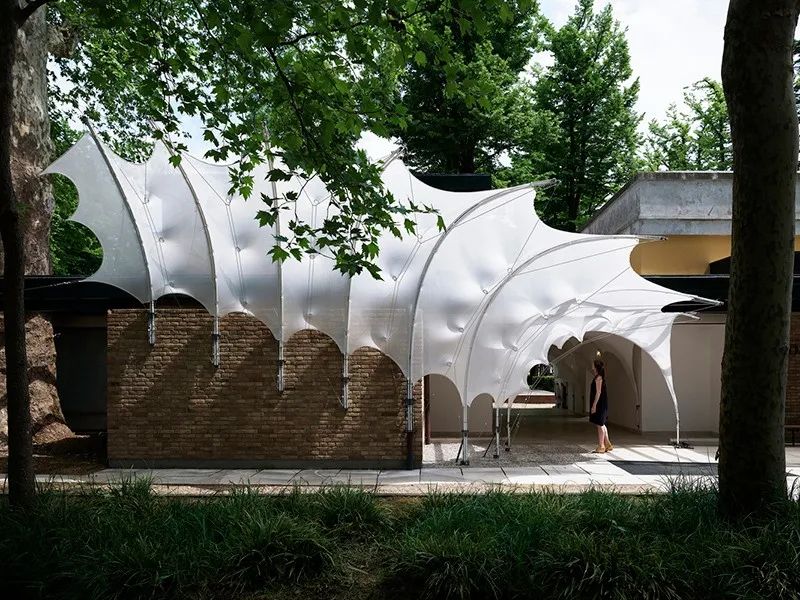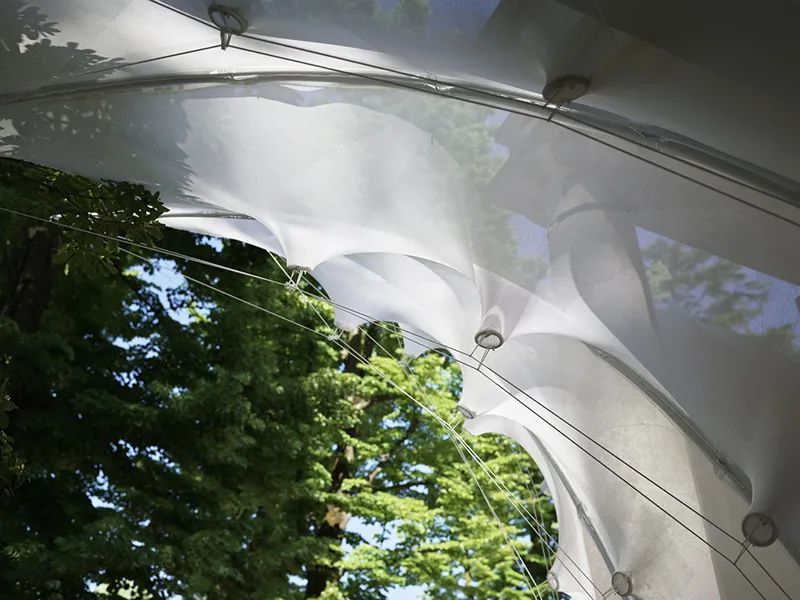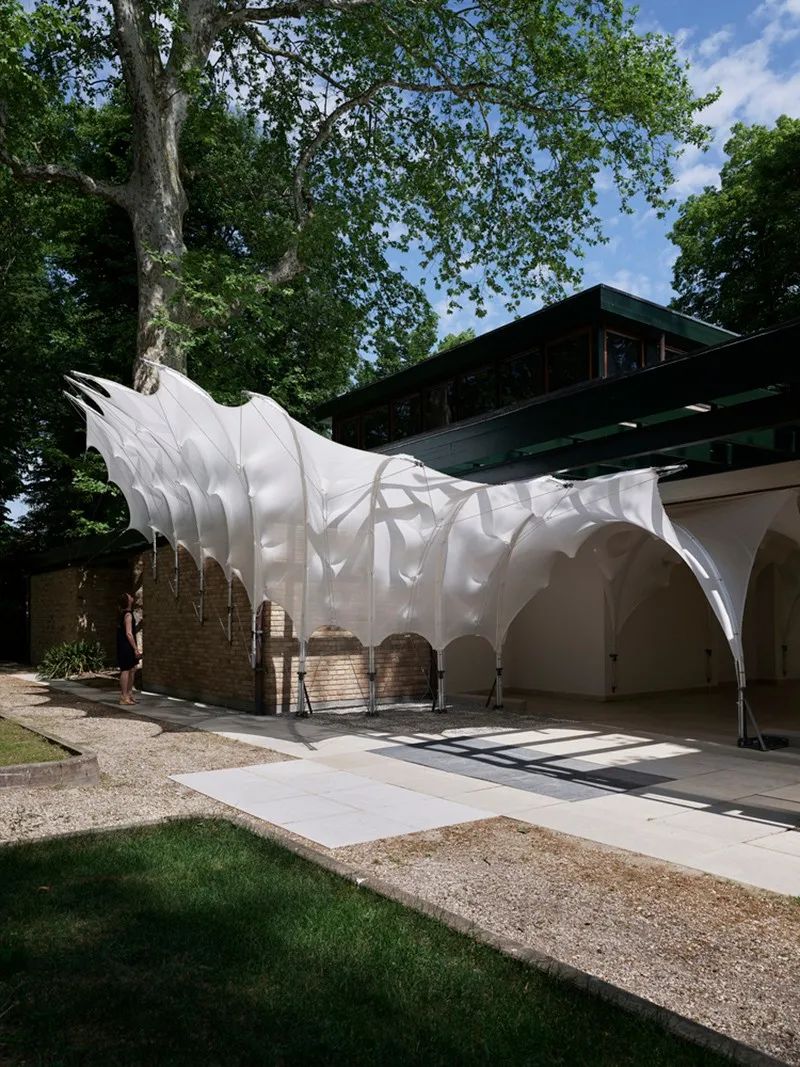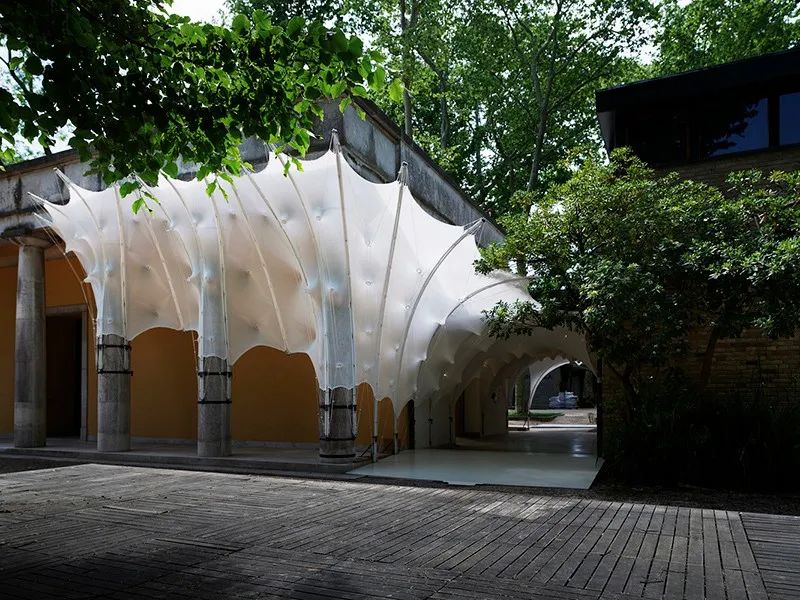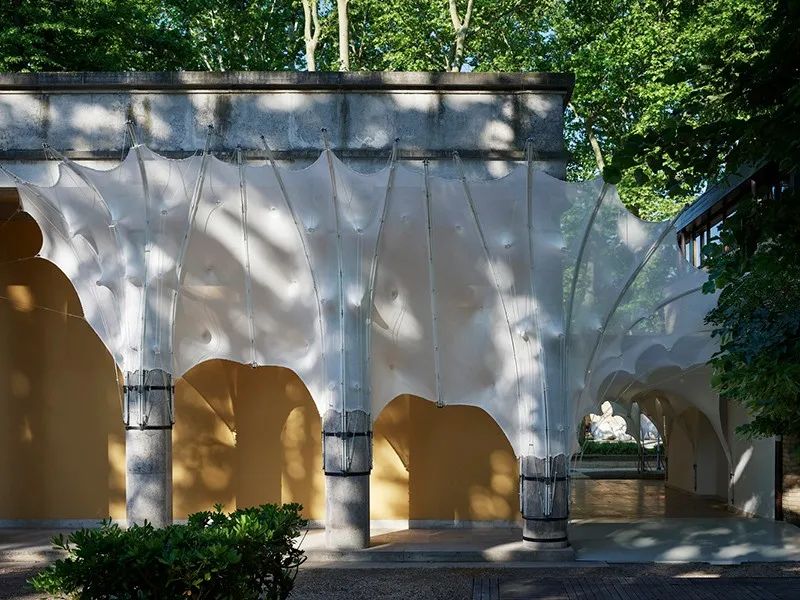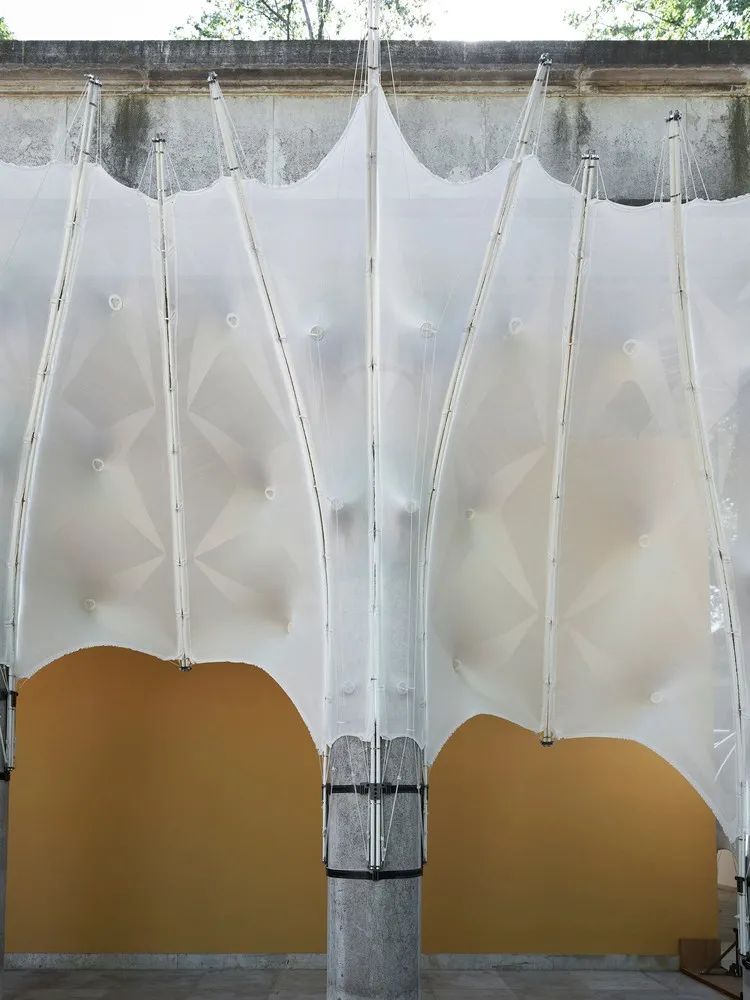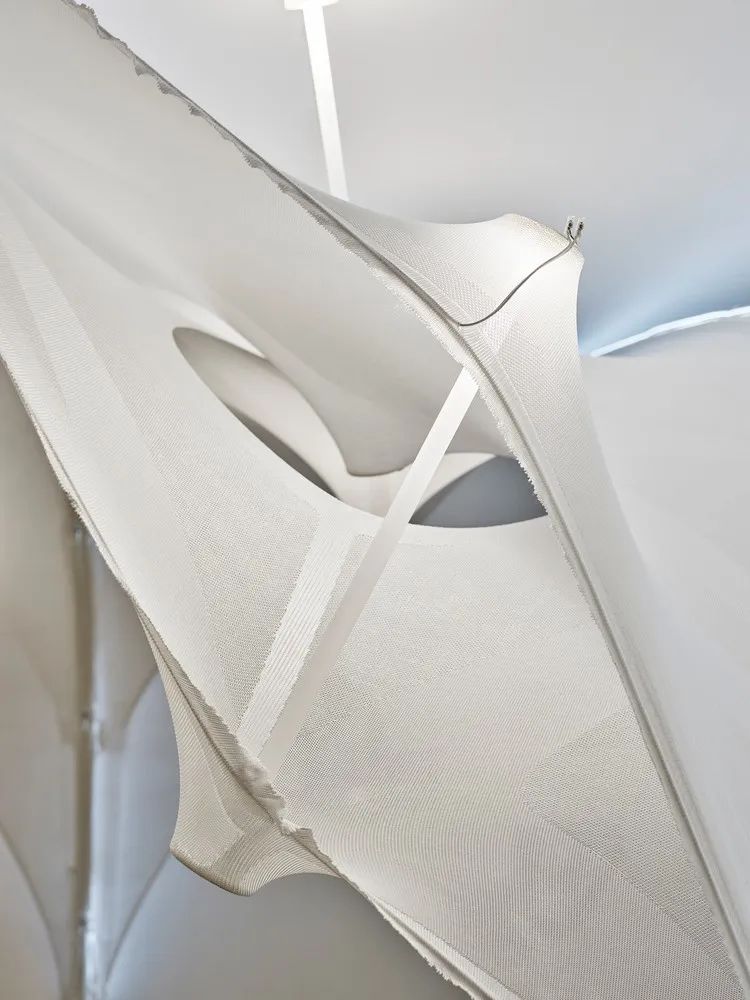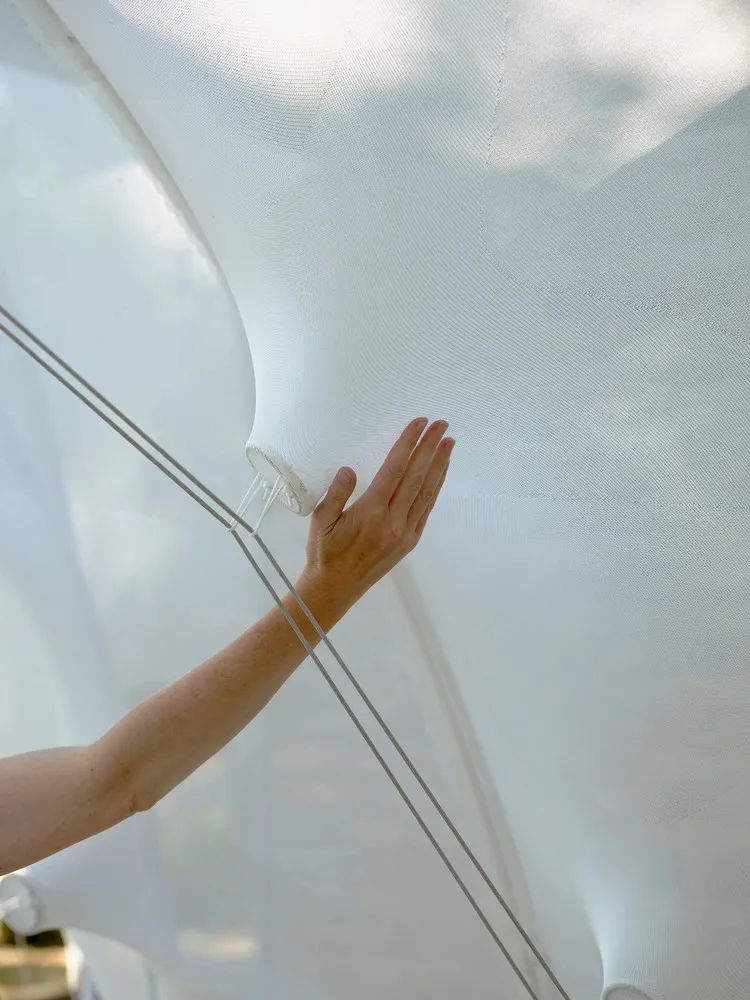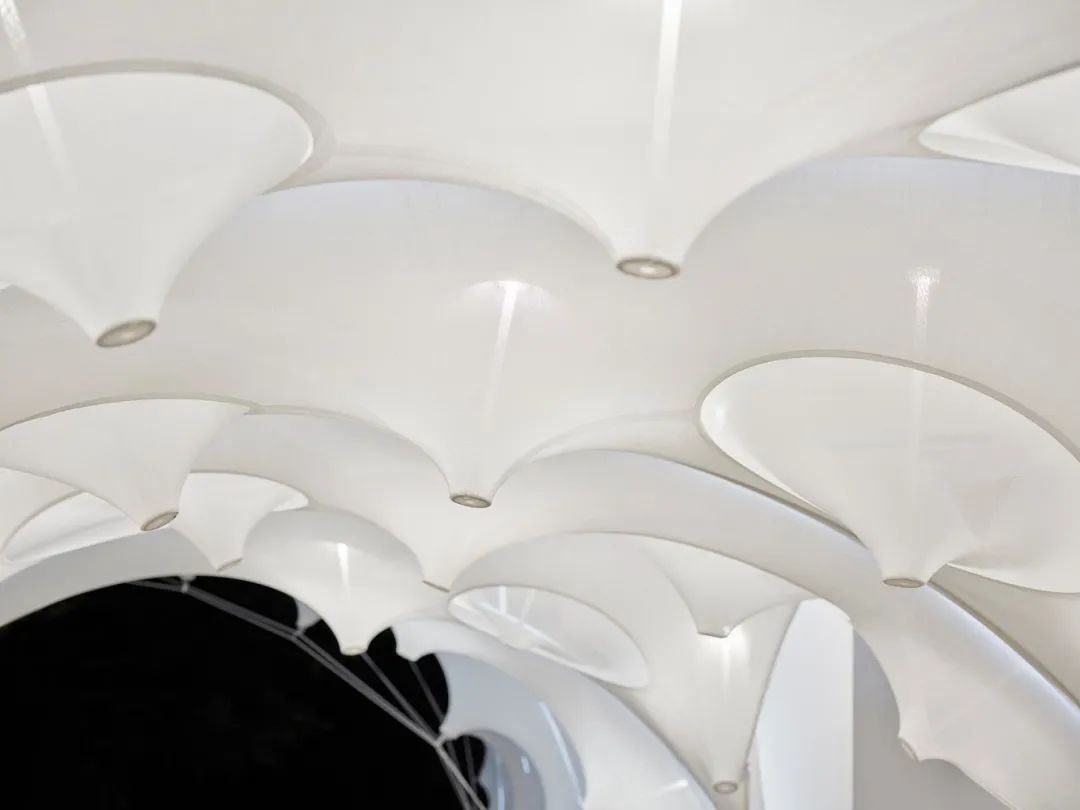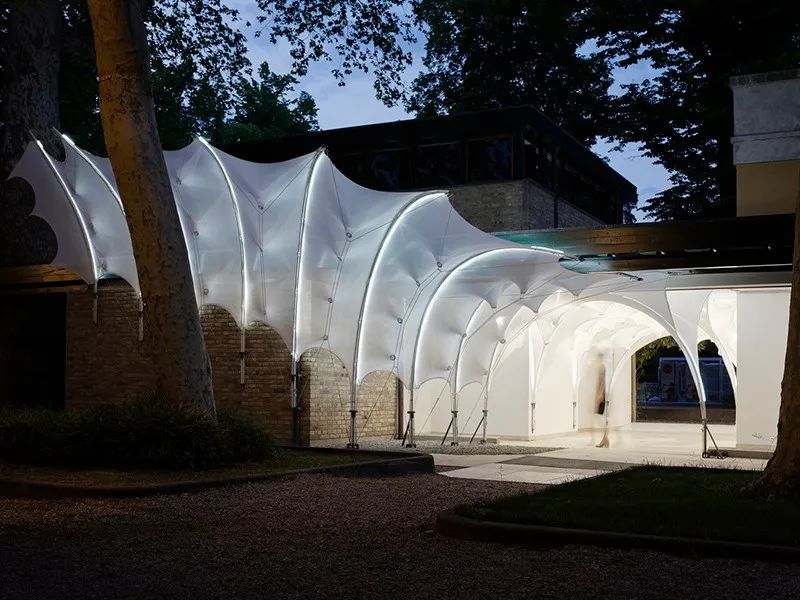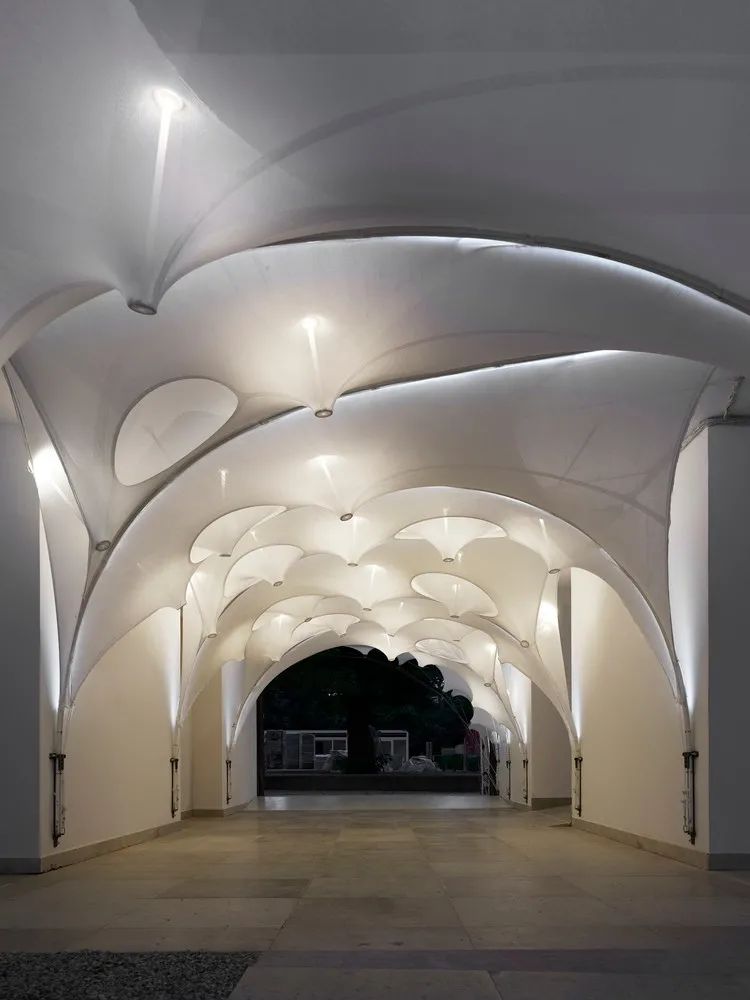Using woven fabrics and different material properties embedded in movable bent fiberglass rods, these blends perfectly illustrate the artistic concept of balance and form.
The design team named their case Isoropia (Greek for balance, balance, and stability) and studied how to rethink the use of building materials. Current technologies and materials will not only deplete our planet’s resources, but will also fail to meet the housing needs of earth’s growing population. Hence the need for smarter building materials, processes and techniques. Isoropia advocates a lighter architecture in which the bending and stretching behavior of materials is actively used to build smarter buildings at less cost.
Collaborative innovation, a new tool for the design process
Isoropia is a case of collaborative innovation. It is the product of a broad interdisciplinary collaboration, spanning academics and practice. The designers explored ways to integrate lightweight simulation into architectural design tools. Traditional tools require labor-intensive hand prototyping and delicate structural calculations. Thus, analysis occurs after design, increasing the cost and time required for most construction projects. However, if early design modeling systems were able to understand the behavior of materials, it would enable innovative structural and material research to fundamentally challenge the way buildings are constructed. This grassroots innovation is community-led and open source, creating a free space to imagine what the physical practices of architecture can be.
Multiple properties of a single material
Isoropia studies how to design using interactive behavior. Structures are rarely single materials or pure under tension or compression. Instead, they are made up of a variety of materials, each with its own properties. Isoropia balances the tensile forces of bent active glass fibres with a knitted textile system. Custom design patterns can control film properties by reducing textiles, thickening fiberglass rods or stretching textile protrusions, changing structure in expression and form.
Knitted textile
Isoropia uses knitting as a textile film at a scale that has never been achieved so far with this traditional technique. Knitted fabrics are softer and less homogenous than traditional laminated films and can be used on different scales. By building our own interface between the computational design environment and contemporary digital knitting machines, we are able to control the production of each stitch. Textiles are produced as custom patches and control details such as channels, protrusions and perforations directly from the design environment.
The use of knitting allowed us to produce shapes and integrate all architectural details in the material itself. With this new technology, there is no need for any post-processing of the manufactured films and they are ready to use when they come out of the knitting machine. Building component scale with zero waste production is established. Because the multifunctional components are made from only one material, the fibers can be easily reused in existing recycling processes.
New and innovative materials
Isoropia developed its own material system to control the behavior of materials and detailed building scale. This unique capability is achieved through the first use of power fibers on a building scale. The inelastic nature of fibers in Isoropia provides the baseline strength necessary to create a material that can adapt and transform, creating an inviting spatial experience.
Post time: Oct-08-2021



